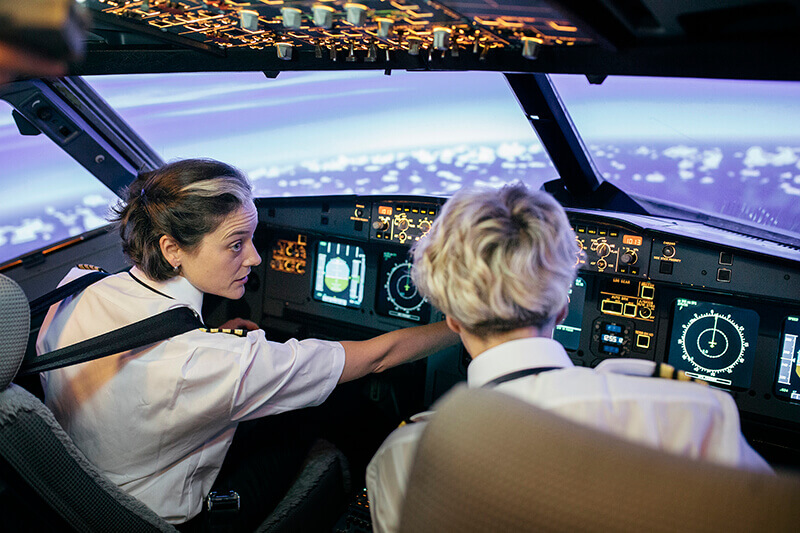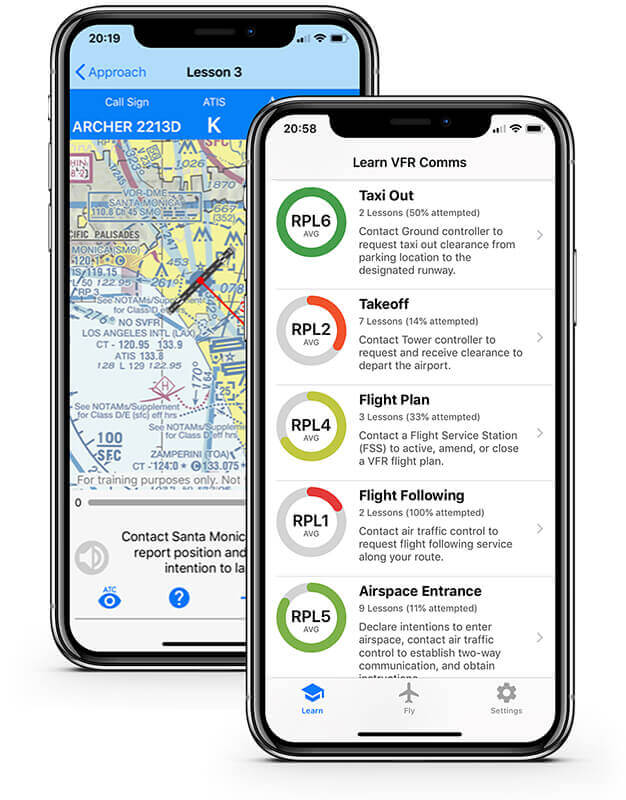August 7, 2019
Technology soars in advancing critical communication, safety for pilots, passengers

A technology created by two Purdue University alumni aims to help new pilots master radio communication skills and better interact with air traffic controllers. (Stock photo)
Communication technology already used in dozens of airports across U.S. launches new platform availability
WEST LAFAYETTE, Ind. – The Federal Aviation Administration has been putting an increased focus on English language proficiency for pilots as the agency looks to ensure safety for passengers through improved communication.
The move means increased attention for a technology called “Plane English,” created by two Purdue University alumni that aims to help new pilots master radio communication skills and better interact with air traffic controllers.
Muharrem Mane, an alumnus from the School of Aeronautics and Astronautics, and Eren Hadimioglu, an alumnus from the School of Aviation and Transportation Technology, created and developed PlaneEnglish. The technology’s simulator is now used in dozens of airports across the United States and was recently launched for iOS.
“PlaneEnglish is an aviation radio simulator to help new pilots acquire radio communication proficiency by developing advanced skills more in realistic environments,” Mane said. “We have heard from users that they improve their radio communication skills more in one hour through our platform than they do in flying for a dozen hours.”
The app-based tool also aims to help new pilots reach FAA and International Civil Aviation Organization standards for Aviation English language use, put in place to ensure safety in the sky.
 PlaneEnglish is an aviation radio simulator to help new pilots acquire radio communication skills. (Image provided)
Download image
PlaneEnglish is an aviation radio simulator to help new pilots acquire radio communication skills. (Image provided)
Download image
“We have been analyzing audio training files from the FAA and ICAO and using that data to establish our grading metrics to help users achieve the necessary communication skills to increase their radio proficiency and aviation safety,” Mane said.
PlaneEnglish lessons guide users through simple and complicated interactions with air traffic control on every phase of flight. Each simulation includes visual clues (like altitude, distance from an airport and direction) to provide the pilot with the situational awareness necessary for communication.
Users are required to respond properly in specific situations, using the correct phraseology, speech rate and other factors. There can be as many as five or six exchanges back and forth with air traffic control. Then users are graded on those responses.
The work aligns with Purdue's Giant Leaps celebration, celebrating the university’s global advancements in space exploration as part of Purdue’s 150th anniversary. This is one of the four themes of the yearlong celebration’s Ideas Festival, designed to showcase Purdue as an intellectual center solving real-world issues.
The creators of PlaneEnglish are working with the Purdue Research Foundation as they develop their technology.
About Purdue Research Foundation
The Purdue Research Foundation is a private, nonprofit foundation created to advance the mission of Purdue University. Established in 1930, the foundation accepts gifts; administers trusts; funds scholarships and grants; acquires property; protects Purdue's intellectual property; and promotes entrepreneurial activities on behalf of Purdue. The foundation manages the Purdue Foundry, Purdue Office of Technology Commercialization, Purdue Research Park and Purdue Technology Centers. The foundation received the 2016 Innovation and Economic Prosperity Universities Award for Innovation from the Association of Public and Land-grant Universities. For more information about funding and investment opportunities in startups based on a Purdue innovation, contact the Purdue Foundry at foundry@prf.org.
Writer: Chris Adam, 765-588-3341, cladam@prf.org
Source: Muharrem Mane, muharrem@planeenglish.net

